On July 19-21, 2022, the Body-worn Camera (BWC) Training and Technical Assistance (TTA) team, in partnership with the Bureau of Justice Assistance (BJA), held the 2022 BWC TTA Virtual National Meeting. This meeting was primarily intended for FY 2020 BWC Policy and Implementation Program (PIP) grant agencies, but was also open to previous years' grantees. Members of the BWC TTA Team, subject matter experts (SMEs), and representatives from BJA and JSS also participated in the meeting.
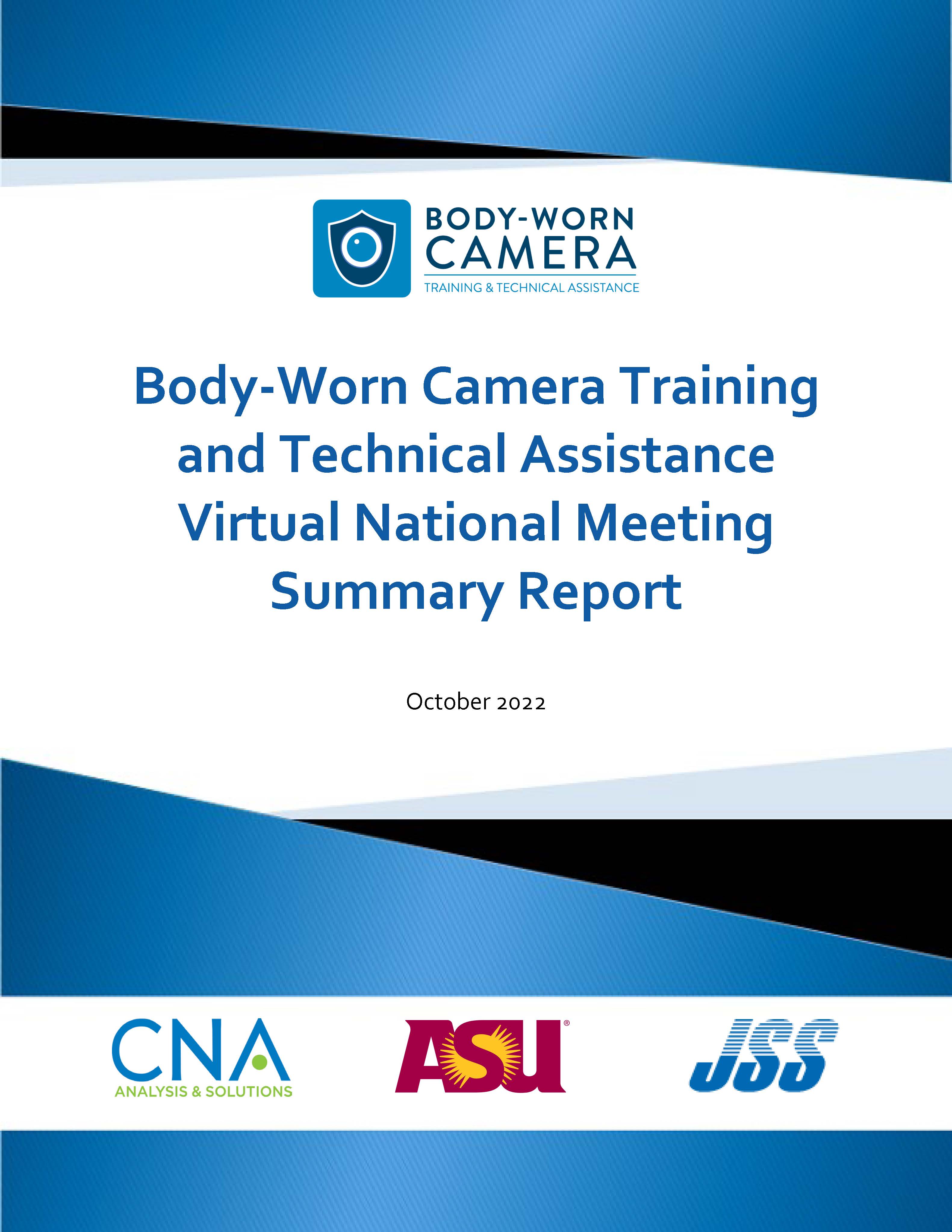
To review participants' discussions and lessons learned from the meeting, new idea for TTA, and evaluation feedback from the attendees, access the BWC TTA National Meeting Summary Report here.
Due to COVID-19, this meeting was held in a virtual format again. Each of the 2022 Virtual National Meeting training sessions were recorded, and you may access the session slides by clicking on the links below:
Session Title, Session Description, & Materials
Day One - Welcome and Introductions
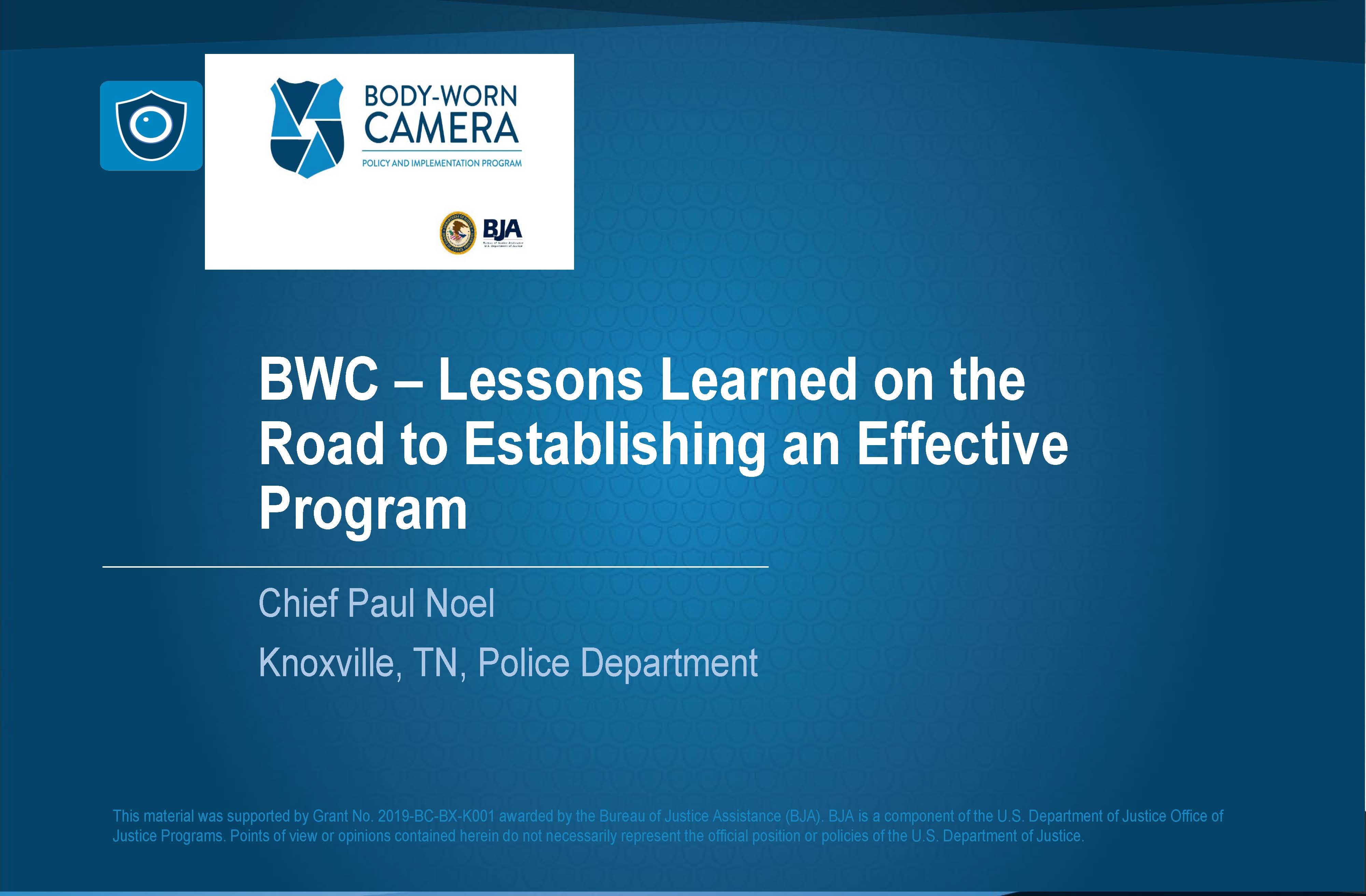
Keynote Presentation: BWC - Lessons Learned on the Road to Establishing an Effective Program
In this session Chief Noel had the opportunity to discuss his experiences implementing and sustaining an efficient Body Worn Camera program with both the New Orleans, LA, Police Department and the Knoxville, TN, Police Department. Chief Noel’s experience with piloting the effort of getting one of the first major body worn camera (BWC) initiatives off the ground in New Orleans provided him with primary insight on the nuances associated with the integration of this in-demand technology.
Access the presentation here.

BWC 101: Past, Present, and Future
BJA's John Markovic and the BWC TTA Co-Director Dr. Michael White will discuss the emergence of BWCs as critical to evidence generation, officer and public safety, and police-community relations. They will also provide a brief overview of the BJA BWC Performance Improvement Program (PIP), BJA BWC Toolkit, and TTA resources, and they will discuss foundational elements of the BWC TTA Program.
Access the slides here.
Access the presentation here.
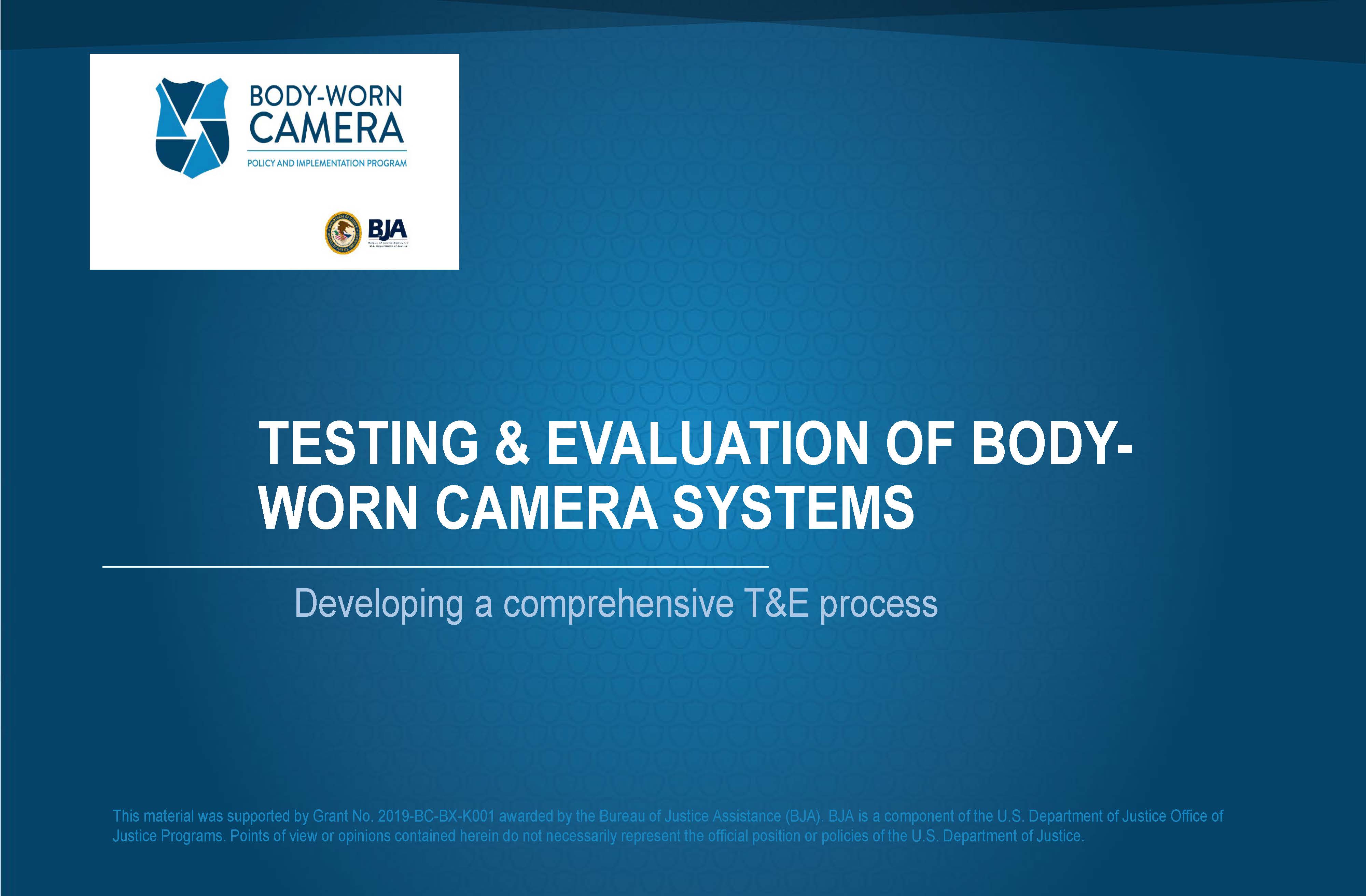
Pilot Testing & Evaluation of BWC Equipment
In this session Geoff Smith and Charles Stephenson of CNA discussed challenges and best practices associated with testing and evaluating (T&E) BWC equipment prior to procurement. Additionally, a BWCPIP agency discussed what they did to test and evaluate equipment and how that informed their camera purchase and BWC program.
Access the presentation here.
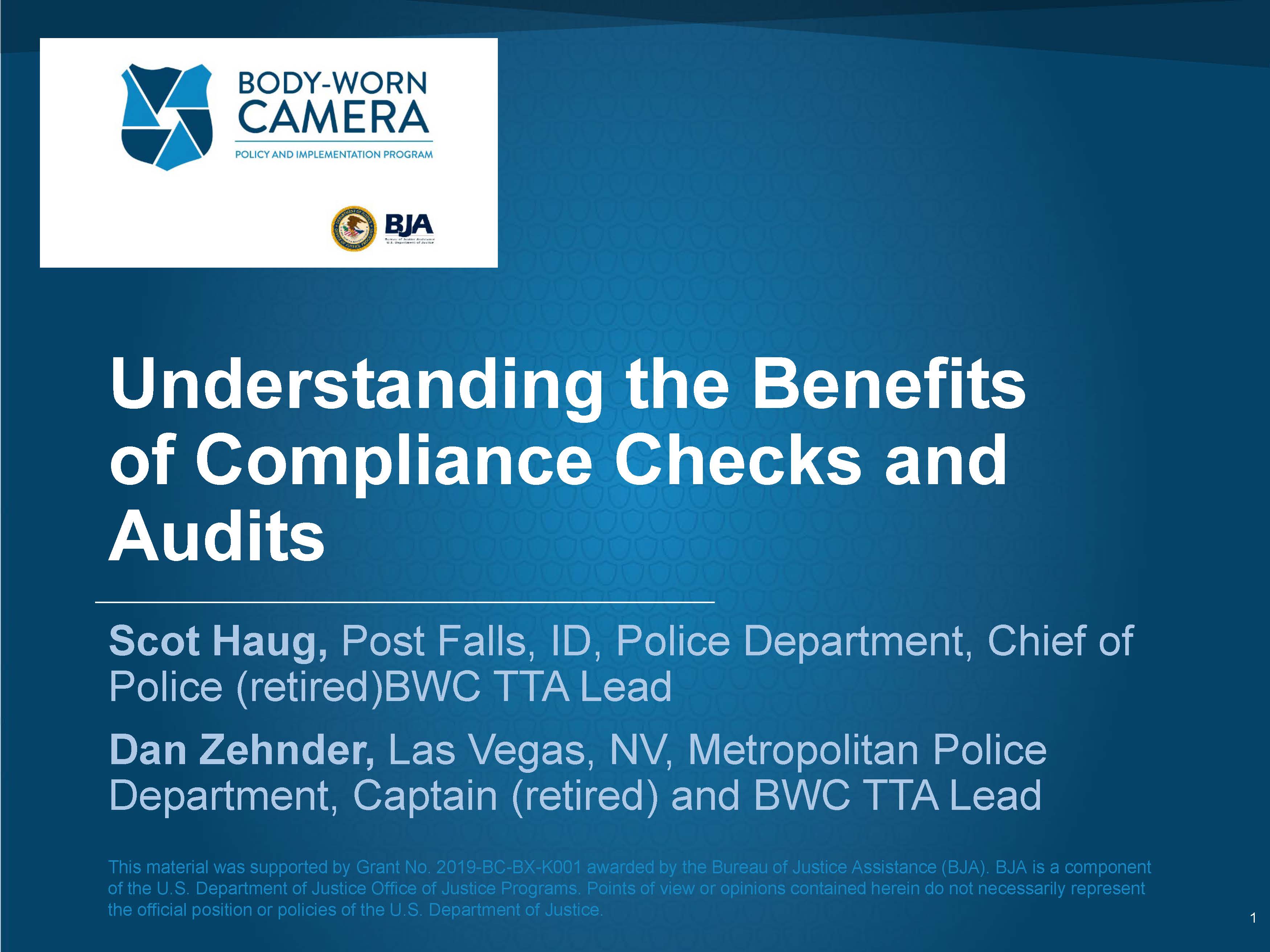
Understanding the Benefits of Compliance Checks and Audits
In this session, subject matter experts Dan Zehnder and Scot Haug discussed the issues, concepts, and approaches to reviewing BWC videos for policy compliance review and program auditing.
Access the presentation here.
Access the slides here.
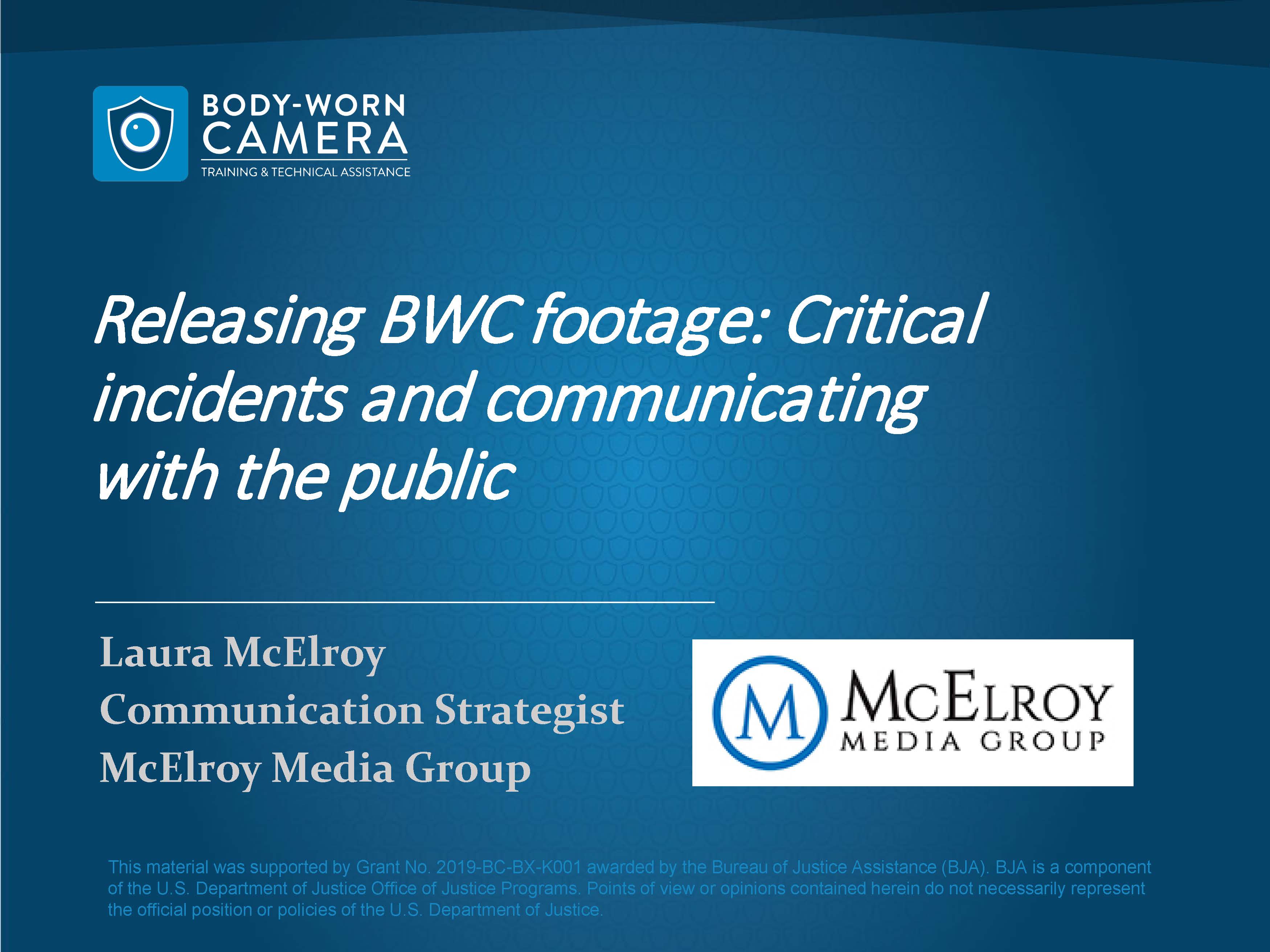
Releasing BWC Footage: Critical Incidents and Communicating with the Public
This session focused on issues, concepts, and approaches to reviewing BWC videos for policy compliance review and program auditing, covering topics such as the important role of compliance monitoring in BWC programs, different levels of monitoring (e.g., monitoring individual officer, program, or organizational performance), and suggested approaches for implementing compliance monitoring programs. It also included discussion on various compliance monitoring programs that agencies have implemented.
Access the slides here.
Access the presentation here.
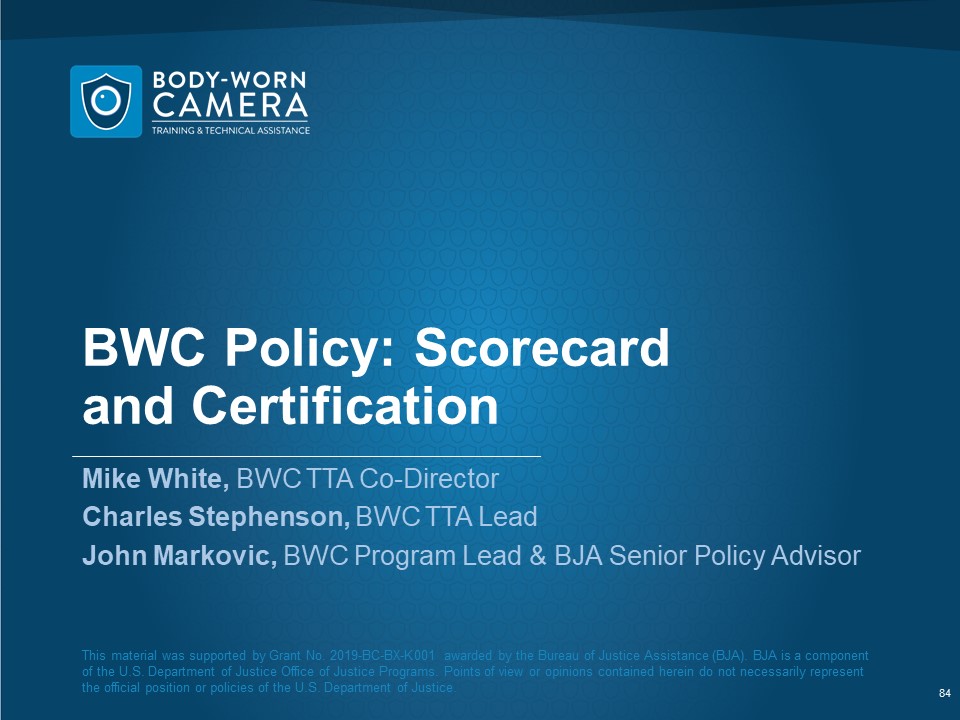
Advanced Topics in BWC Technology
In this session, Elliot Harkavy of CNA, SME Christian Quinn, and Derek Meeks of USAO-DC discussed how BWC technology changes rapidly, including analytic approaches to utilizing BWC footage. The session focused on recent and emerging trends in advanced analytics with BWC data, touching on artificial intelligence approaches to BWC image analysis, and the current state of Natural Language Processing (NLP) applications with BWC footage.
Access the slides here.
Access the presentation here.
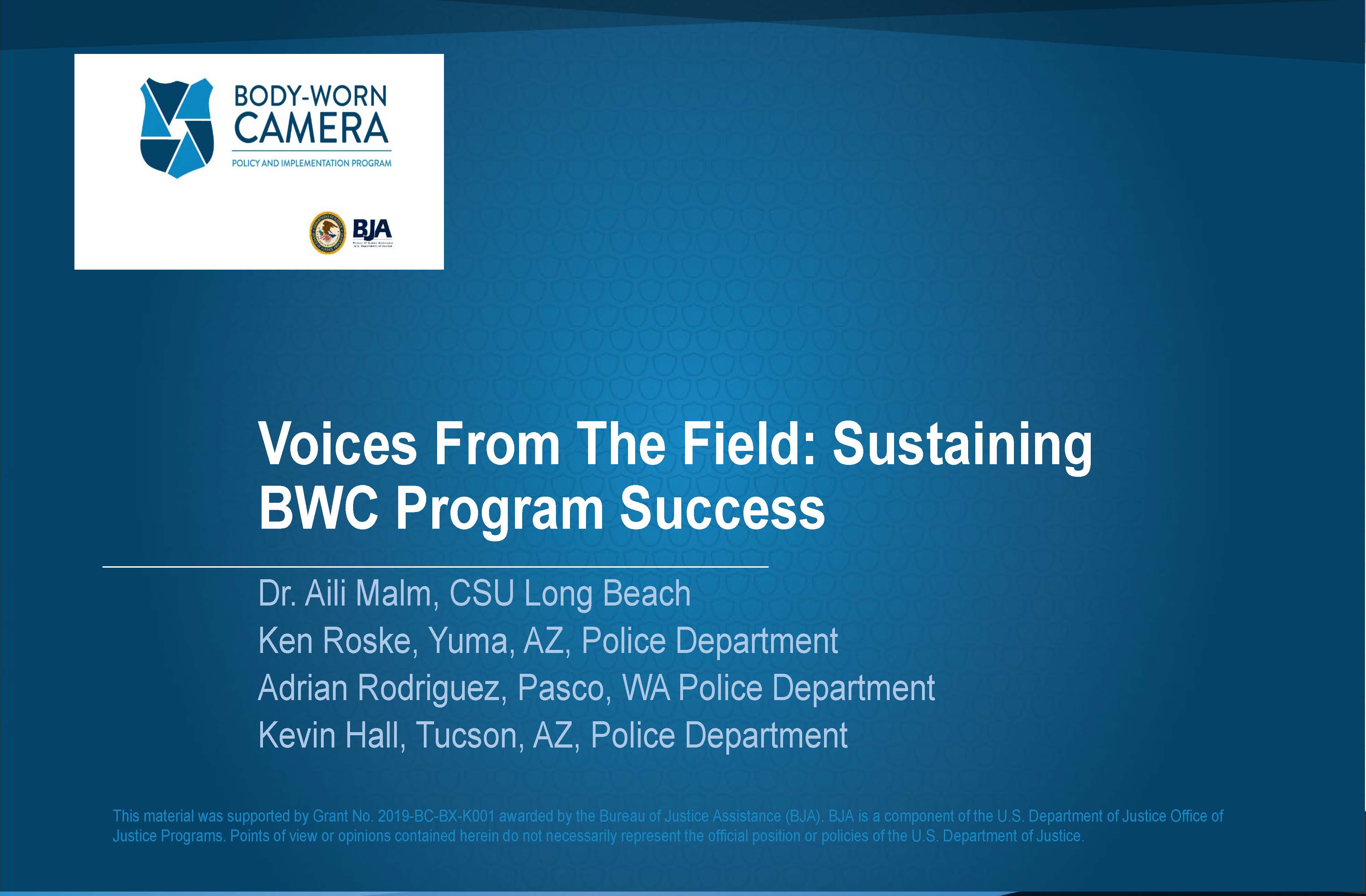
Voices from the Field: Sustaining BWC Program Success
In this session, the panelists discussed best practices for sustaining a successful BWC program. The audience heard from Kevin Hall, Bill Parramore, and Adrian Rodriguez each panelist on their reflections about their PIP sites on the implementation of their BWC programs, and how they have sustained success with their programs long after first implementation.
Access the presentation here.
Day Two

Q&A/Office Hours with BJA State Policy Advisors & JustGrants
BJA state policy advisors and representatives from JustGrants will be available to answer questions from BWC PIP grantees. Meeting attendees with questions related to grant management and the systems supporting it are encouraged to participate.
Access the presentation here.
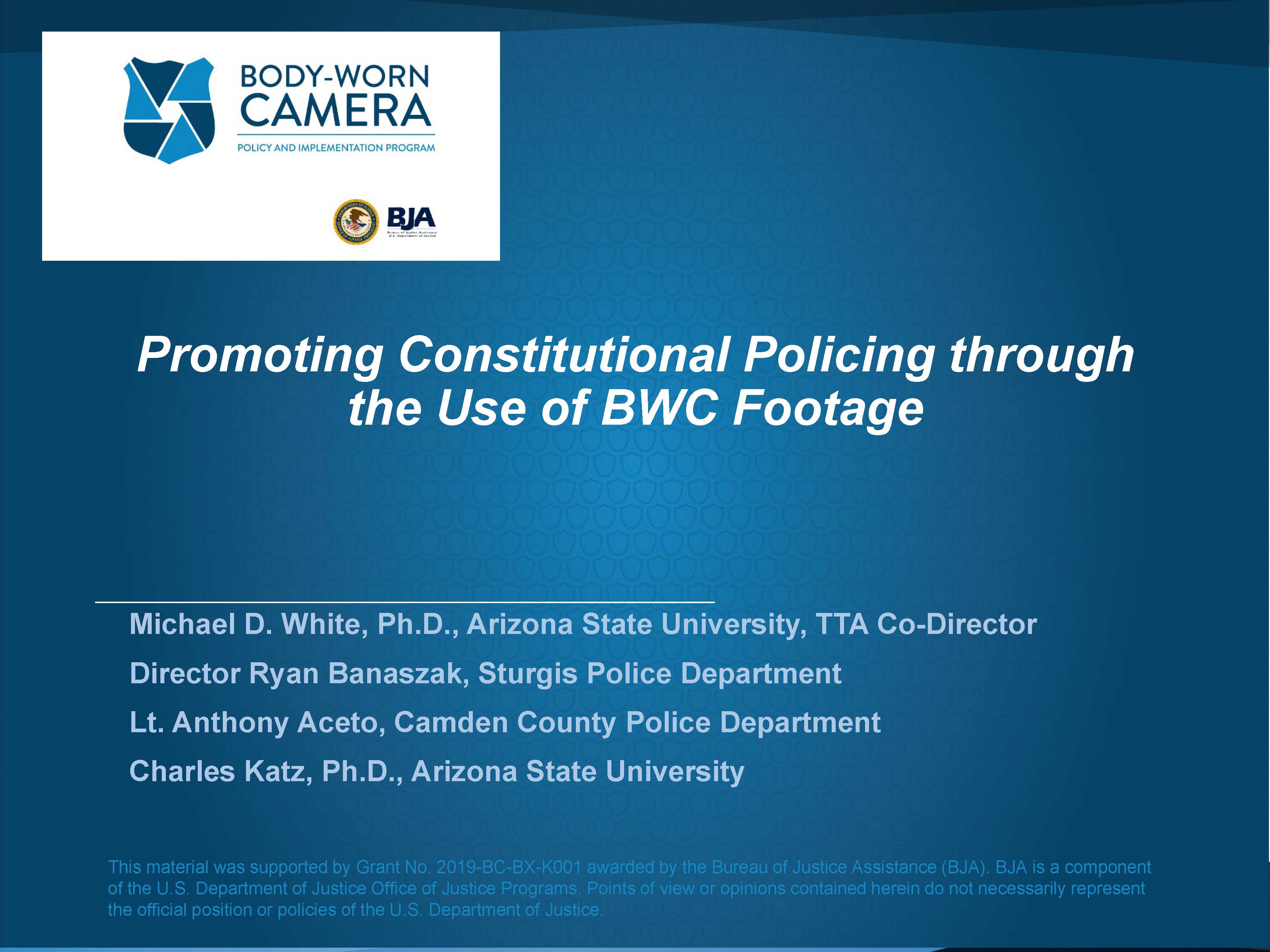
Promoting Constitutional Policing through the Use of BWC Footage
In this session, Dr. Mike White and the panelists discussed BWC footage and how it has been helpful in both improving police officer conduct and in enhancing the links between BWC footage and police officer training and performance review.
Access the slides here.
Access the presentation here.
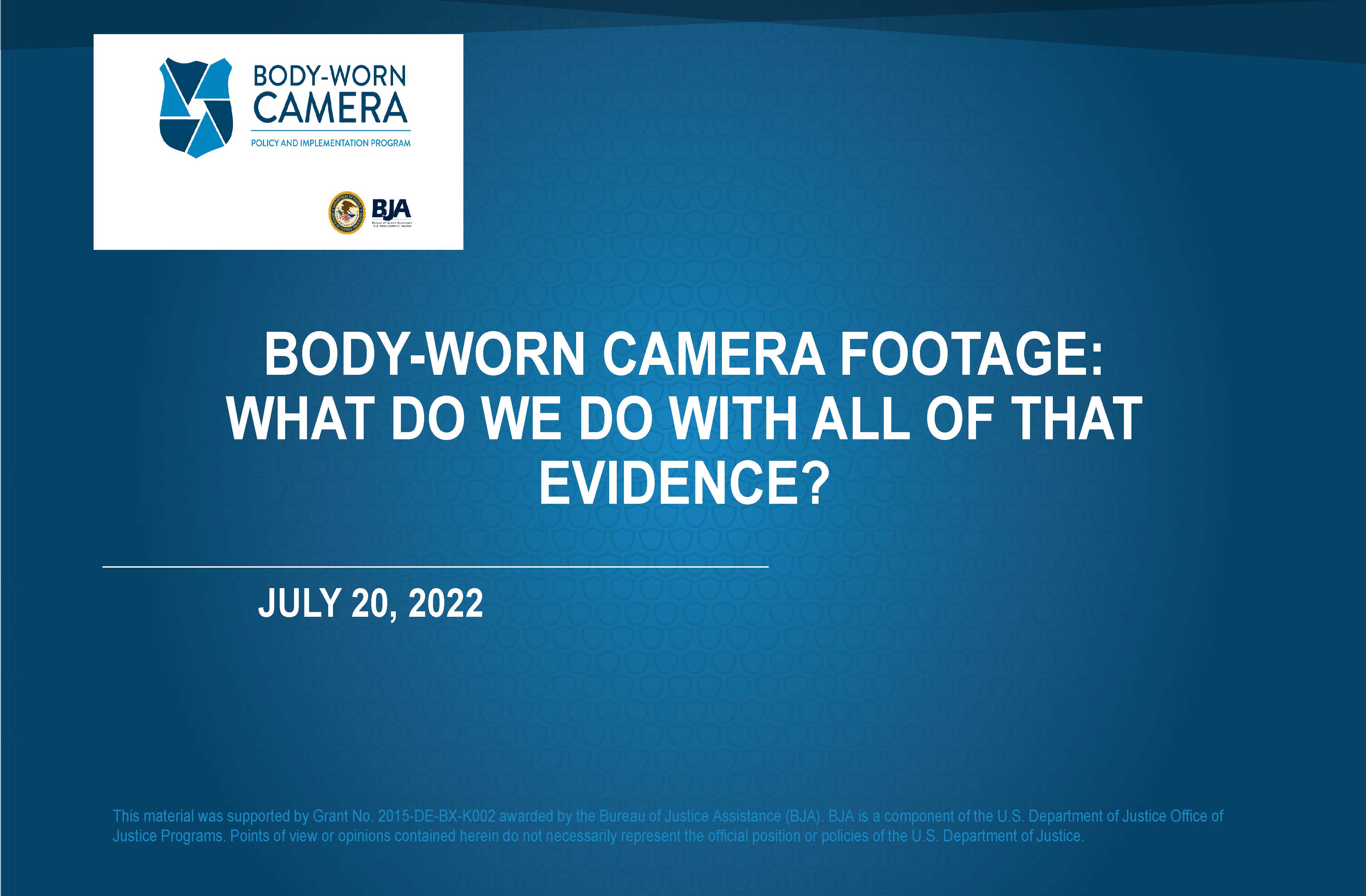
Digital Evidence Management: What Do We Do With All The Footage?
In this session the presenters discussed body worn camera footage and the way in which the footage is used within police departments and prosecutors’ offices. Panelists provided expert opinions on the rapidly changing climate of digital evidence management and its ever-growing importance in the world of law enforcement. As agencies across the country continue to accept and adopt body worn cameras it has become essential that they craft policies and procedures which guide agencies through critical incidents that garner significant public interest.
Access the slides here.
Access the presentation here.
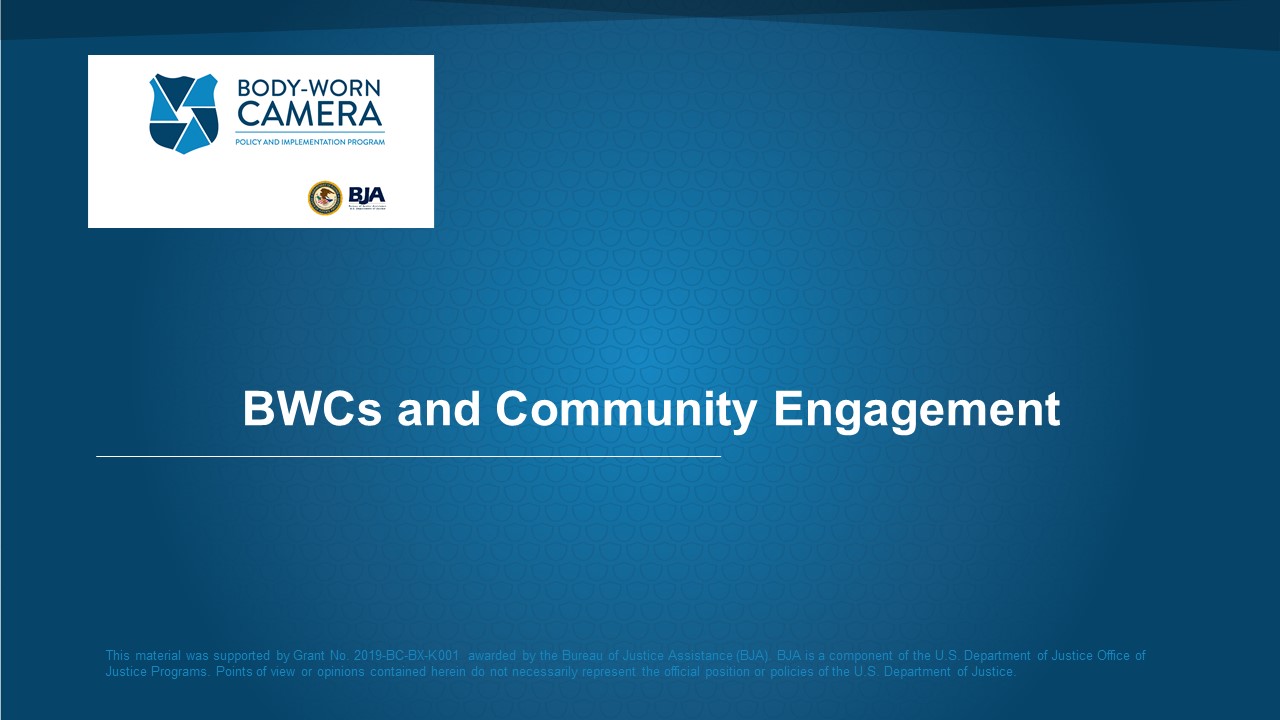
BWCs and Community Engagement
In this session, the panelists discussed important and innovative ways to engage community members throughout the BWC implementation process. The speakers emphasized the role of the community in BWC programs beyond policy development (e.g., training, use of force review, complaints) as well as barriers to meaningful community engagement, and how to sustain community engagement surrounding BWCs. Chief Paul discussed his practice of sitting down with the families involved in a critical incident and showing them the BWC footage before it is released to the public. He wants the families to see it first from the police and the direct source before they see it on news outlets. Chief Paul believes this practice is very important to building a relationship with the public and bridging the gap between the police and community.
Access the slides here.
Access the presentation here.
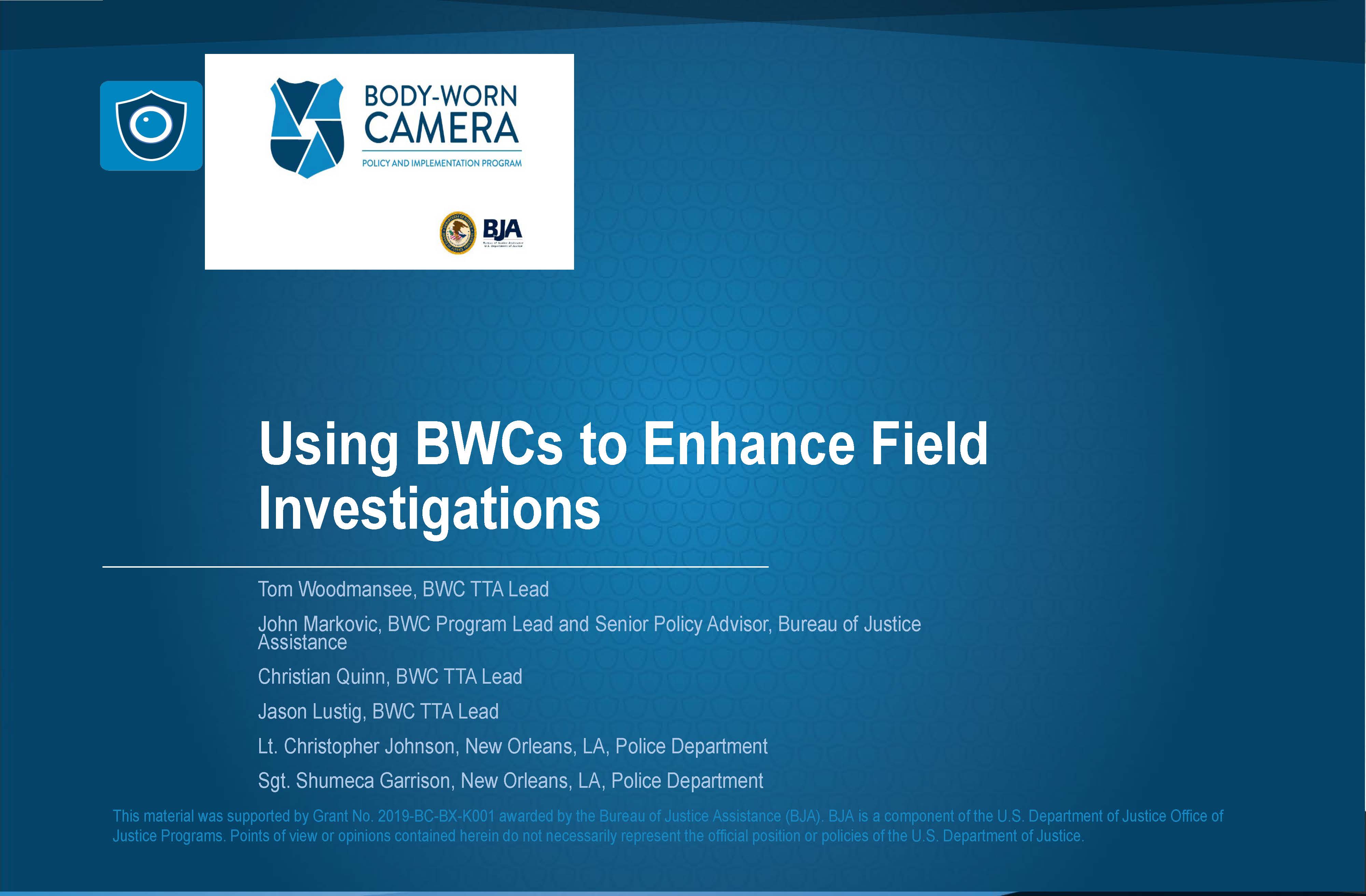
Using BWCs to Enhance Field Investigations
Police are more frequently recognizing how BWCs and digital evidence can assist them with their investigations in ways that were not commonly considered during the initial phase of BWC implementation. This session highlighted how some agencies have taken advantage of BWCs to enhance their investigations in the field.
Access the slides here.
Access the presentation here.
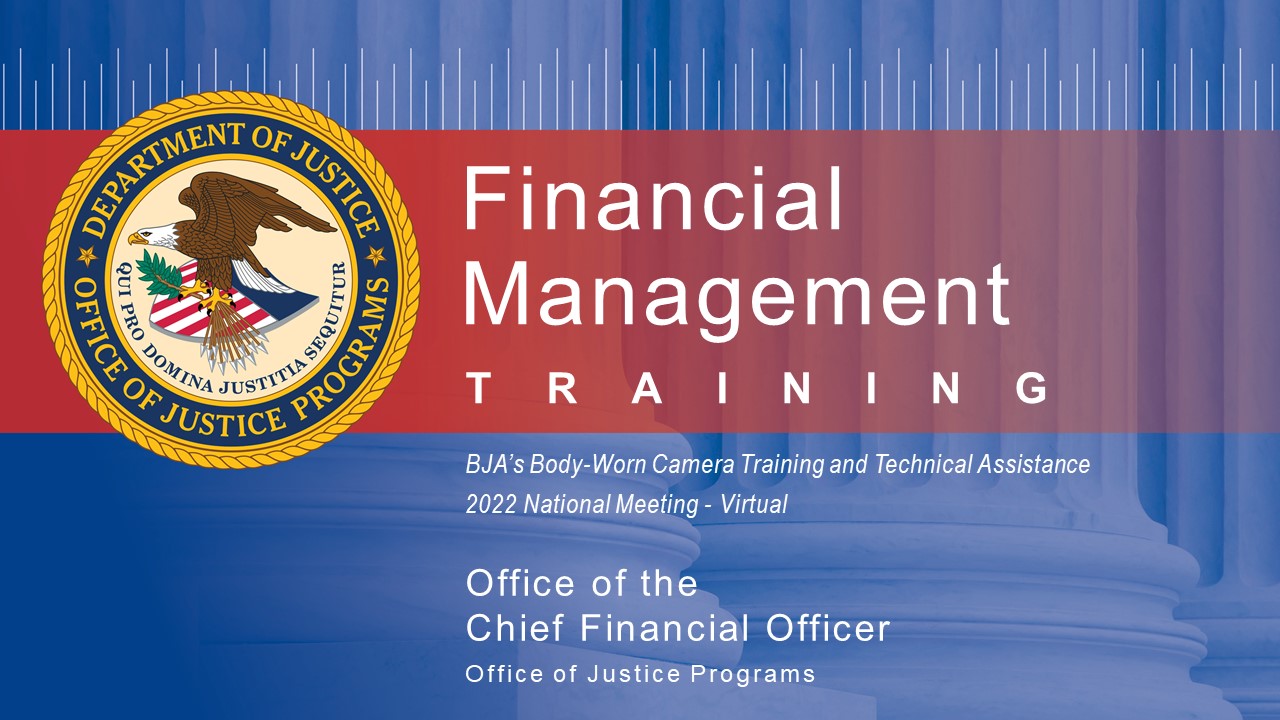
Understanding the Federal Procurement Process
This session covered the BWCPIP procurement process and general guidance for financial management of BWCPIP grants. Mr. Michael Williams with the Office of the Chief Financial Officer discussed when it is permissible for a grantee to use a sole source contract, the dos and don’ts of contracting, methods of procurement, purchase thresholds, and helpful resources. He recommended researching key components of BWCs prior to writing the RFP and conducting thorough interviews before making a decision on a BWC system to procure. He also noted that grantees need to be aware of and abide by each state’s procurement rules and utilize the assigned BJA state policy advisor for assistance when necessary.
Access the slides here.
Access the presentation here.
Day Three

Q&A/Office Hours with BJA State Policy Advisors & JustGrants
BJA State policy advisors and representatives from JustGrants were available to answer questions from BWC PIP grantees. Meeting attendees with questions related to grant management and the systems supporting it were encouraged to participate.
Access the presentation here.
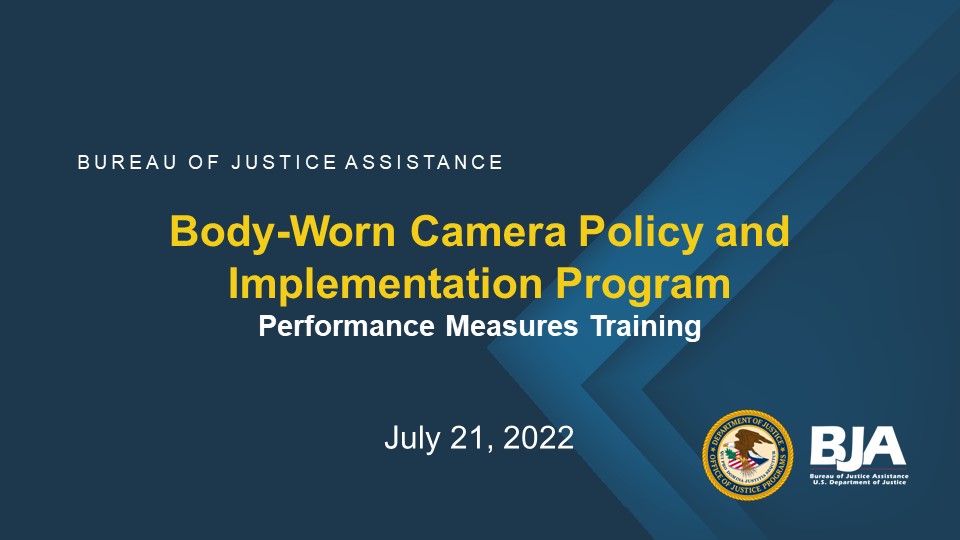
BJA Performance Measurement
This presentation described how BJA uses performance measures to assist the grantees, improve BJA programs, make good decisions, and report to the federal budget appropriation legislators on how funds are spent
Access the slides here.
Access the presentation here.

Looking Ahead: Emerging Issues in Body Worn Camera Programs and Technical Assistance
BJA's John Markovic and the BWC TTA Director Dr. James "Chip" Coldren will discuss lessons learned over the past five years of BWC implementation and technical assistance delivery, touching on such issues as digital evidence management, maturation of BWC programs, and emerging needs for technical assistance.
Access the slides here.
Access the presentation here.

BWC Policy: Scorecard and Certification
This session focuses on the processes that BWC PIP grantees must complete to ensure that they have a BWC policy in place that is comprehensive, deliberate, and developed with broad stakeholder input. This session will discuss policy development success, key challenges, and promising practices.
Access the slides here.
Access the presentation here.
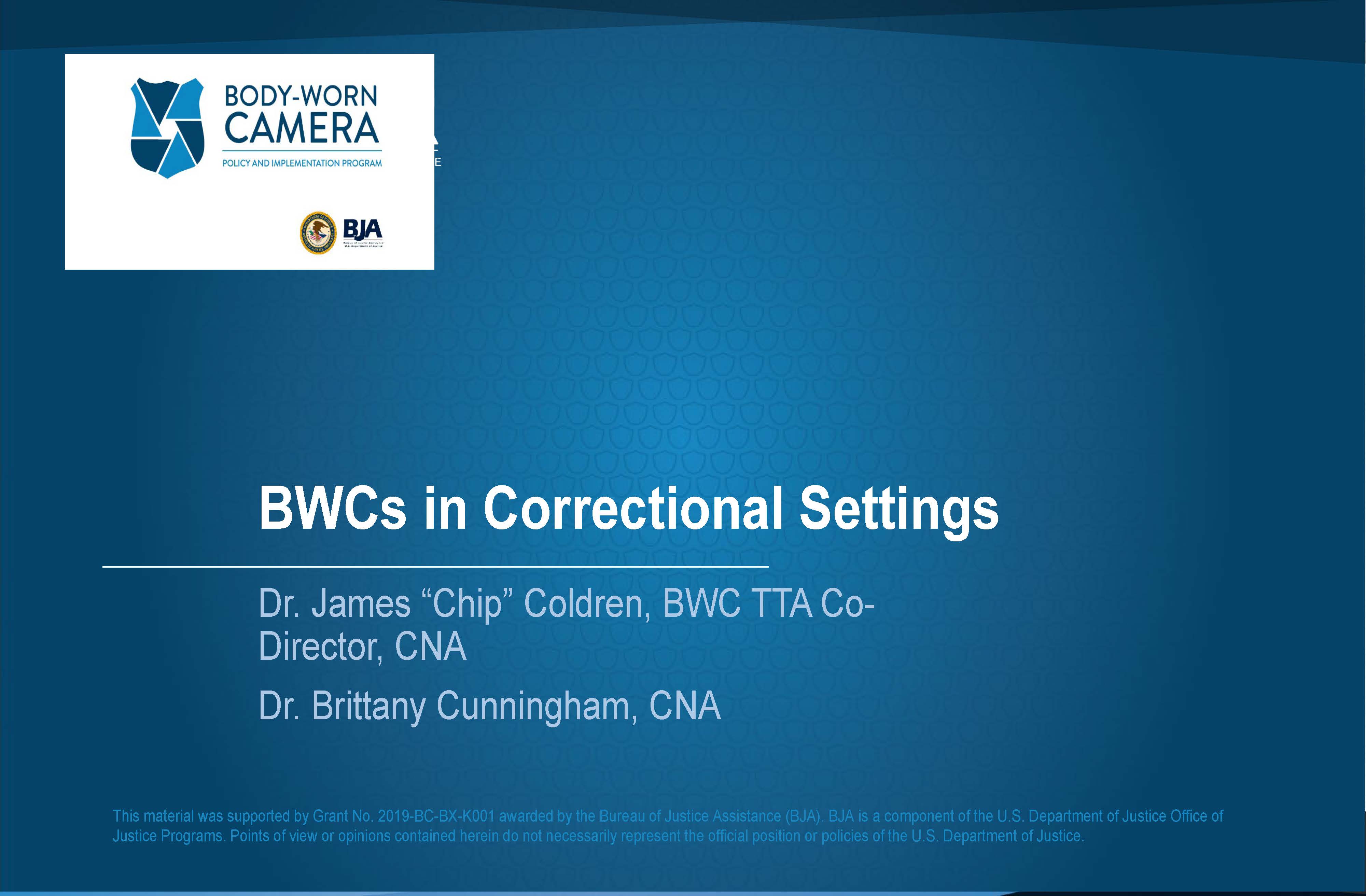
BWCs in Correctional Settings
In this session, the panelists discussed body worn camera implementation in correctional facilities and the successes and challenges they faced in implementing their programs. The discussions centered on different aspects of body worn camera program implementation and buy-in. Ms. Grigsby talked about the messaging and how it was relayed from many different angles with officers involved from the very beginning. A committee was developed to include and engage different stakeholders. They spoke to probation officers, youth from facilities, parents, courts, the legal department, and the investigations department. They also provided accolades for staff handling situations well. Major Miller talked about his agency’s public service announcements and hosting events about their BWC program. Superintendent Beebe noted that his department enhanced their communication and messaging by facilitating training for stakeholders such as the public defender’s office, and they developed MOUs with hospitals and emergency medical services.
Access the slides here.
Access the presentation here.
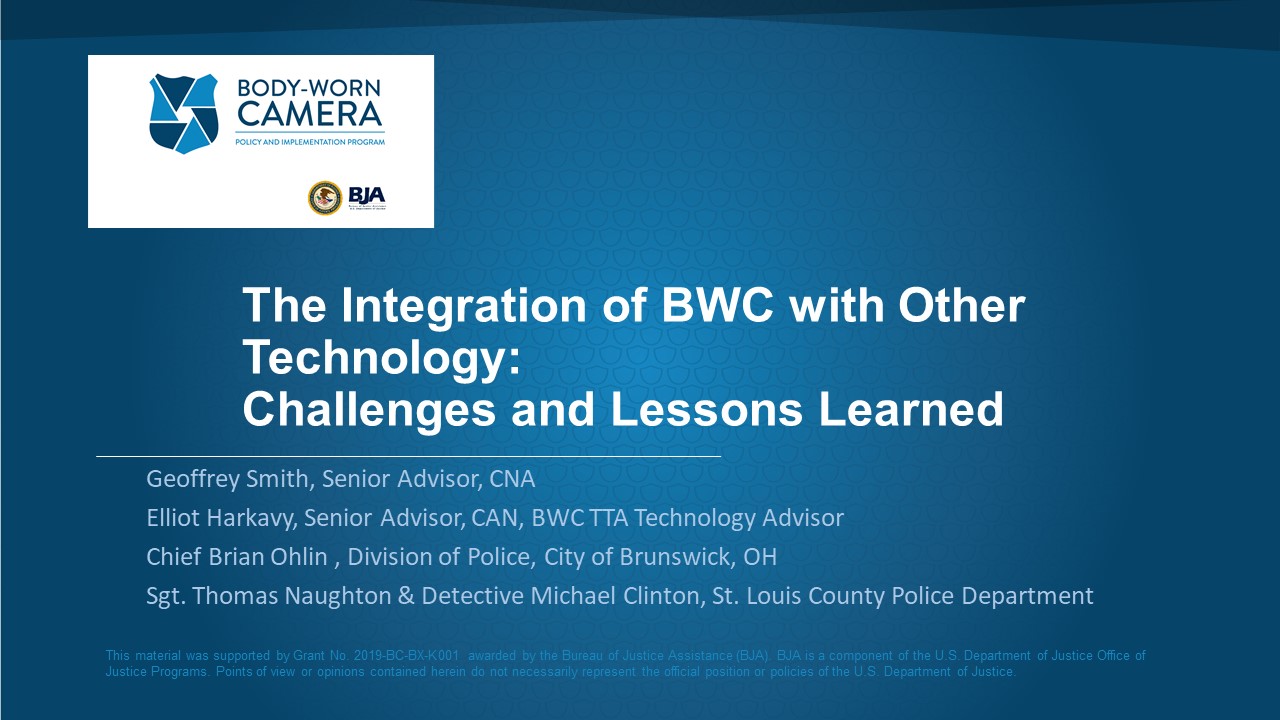
The Integration of BWC with Other Technology: Changes and Lessons Learned
This panel focuses on changes in BWCs and other related technology in the past six years (e.g., dashboard cameras, LPRs, UAS). The panel will discuss the current state of BWC technology and the realities of integrating BWCs with other systems.
Access the slides here.
Access the presentation here.

What Research Is Telling Us About Body Worn Camera Practice
In this session, the panelists discussed what research has documented about the implementation of body worn cameras and local agency practices regarding body worn camera use, touching on such issues as activation and de-activation, the impact of BWCs on officer discretion, and how BWCs are used in special policing units.
Access the slides here.
Access the presentation here.

Closing Thoughts Q&A
The BWC PIP program team leadership provided a brief summary of the conference and discussed key takeaways. Leadership discussed any training and technical assistance needs they heard from participating agencies and were available for questions.
Access the presentation here.
